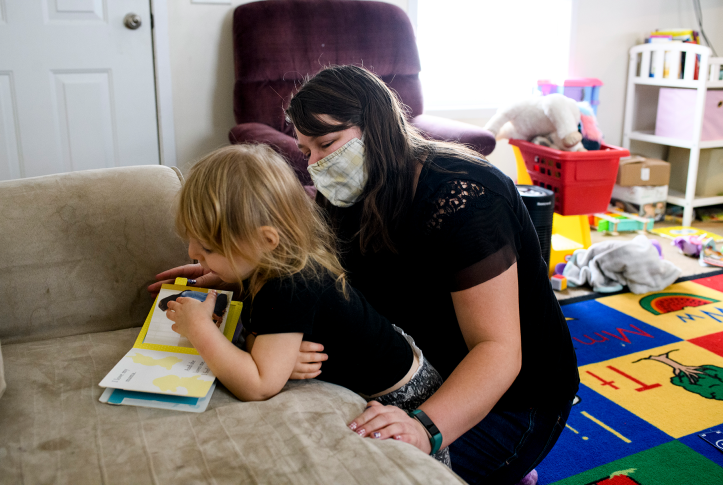In the past 20 years, the rate of autism spectrum disorder (ASD) diagnoses in youth has risen dramatically, from one in 150 to one in 36. Reasons for this increase include greater awareness of the need to screen, wider adoption of standardized screening tools, and successful efforts to educate caregivers and providers about developmental milestones and the need to seek additional evaluation. Approximately one of three children on the autism spectrum live in very-low-income households. The number of autistic individuals enrolled in Medicaid tripled from 2008 through 2016.
As more young people are diagnosed with ASD, states are grappling with how to support young people and their families. In a recent report, children with autism were nearly five times more likely than children without autism to receive mental health care (44% versus 9%). Many autistic youth have co-occurring diagnoses such as anxiety and attention deficit and hyperactivity disorder (both greater than 50%) or intellectual disabilities (37%). In addition, many young people with ASD experience physical health problems (e.g., gastrointestinal symptoms), developmental delays, dental challenges, and sensory challenges. Further, there is an intersection of race and health — a greater percentage of BIPOC (Black, Indigenous, and people of color) children with ASD, across all income levels, have poorer overall health, poorer dental health, and more severe autism than white children with ASD.
Common services utilized by youth with ASD and their families are case management, occupational therapy, speech therapy, physical health services, and applied behavior analysis (ABA). ABA is an evidence-based behavioral therapy that focuses on skill-building using positive reinforcement to promote behavior change. Many state Medicaid programs expanded coverage for young people with ASD after the Centers for Medicare and Medicaid Services issued guidance in 2014. Today, all 50 states require commercial health plans to cover ABA and have expanded Medicaid Early and Periodic Screening, Diagnostic, and Treatment (EPSDT) coverage to include ABA. Yet there are still challenges to meet the full range of needs. Often families need services like care coordination to help navigate medical and educational needs, for example, but many states have struggled to add additional services.
Many states use Medicaid home- and community-based services (HCBS) waivers to support disabled individuals and keep them in the community rather than in institutional care. These waivers can offer supported employment, care coordination, respite care, and other family support services. The most common service offered through waivers to individuals with ASD is case management. Seven states have Medicaid HCBS waivers specifically to support youth with ASD. These waivers offer a variety of flexible services, such as care coordination, respite, family support (including family and peer support), social skills groups, and job skills coaching.
Moving forward, states can use the following strategies to enhance services to youth with ASD:
- Expand youth-specific Medicaid autism waivers, which can include family and peer supports and roles, such as family navigators. The use of family navigators in primary care with low-income minority families has been shown to increase screening rates and improve access to ASD diagnosis evaluations. It also may include vocational support, particularly for youth transitioning from child to adult coverage and services. Waivers also can provide resources that help families understand insurance coverage and access services.
- Ensure payment for early screening and diagnosis for autism by primary care providers. One of the most important factors in improving the outcome for individuals with ASD is early screening and diagnosis.
- Provide appropriate crisis care. Oklahoma, for example, has partnered with the Autism Foundation of Oklahoma to provide sensory kits to all 988 mobile crisis teams and training to crisis responders. Each sensory kit contains items to help ease anxiety and increase communication, like noise-cancelling headphones, fidget items, weighted blankets, and sunglasses for dimming bright lights.
- Offer 24-hour acute care, such as crisis stabilization and inpatient units, designed for youth on the spectrum that considers sensory needs, specialized staffing, and training.
- Expand school-based Medicaid services. This allows for additional funding to schools to provide services to youth with ASD.
While research, support, and prevalence of ASD has grown tremendously over the past 20 years, there is still more work to be done to support youth with ASD. This is needed across the continuum of care but particularly in the public education system. Schools often lack the training and resources to support youth with ASD transitioning to adulthood. State Medicaid authorities can expand treatment services that sustain individuals in the community and improve the health outcomes for children with ASD.

